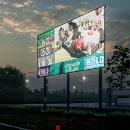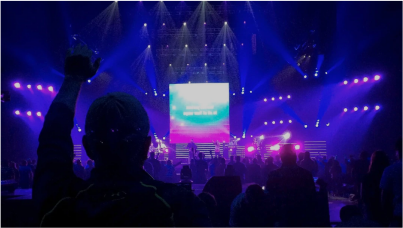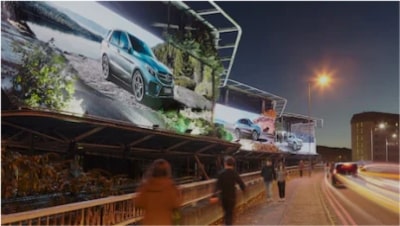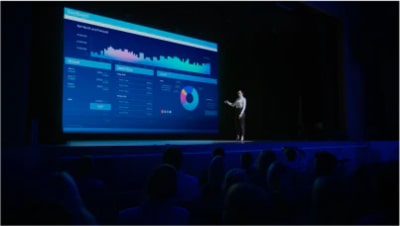How Much Do LED Walls Cost? 2024 Guide to Video Wall Pricing
LED walls are an increasingly popular solution for businesses and organizations looking to make a bold visual impact. Whether it's for digital signage, video walls, or scoreboards, LED technology offers vibrant, high-definition displays that can transform any space. But if you're considering investing in an LED wall for your business, one of your first questions will probably be, “How much does it cost?”
In this 2024 guide to LED video wall pricing, we will break down the factors that affect the cost of LED walls, explain the different options available, and give you a clear idea of what to expect when planning your project.
What Is an LED Wall?
Before diving into pricing, let’s briefly cover what an LED wall is. An LED wall is a display system made up of multiple LED panels (or modules) that work together to form one large, seamless display. LED panels use Light Emitting Diodes to create bright, colorful images that are easily visible, even in bright environments.
LED walls are used in a variety of settings, including retail stores, sports arenas, corporate lobbies, outdoor billboards, and trade shows. The versatility and scalability of LED walls make them a preferred choice for dynamic and engaging visual displays.
Key Factors That Impact the Cost of LED Walls
When it comes to the cost of an LED wall, there isn't a one-size-fits-all answer. The final LED wall price depends on a number of factors, and understanding these variables can help you make an informed decision.
1. Size of the LED Wall
The most obvious factor in the cost of an LED wall is its size. The larger the display, the more panels you’ll need, which directly increases the price. For example, a small LED display for a lobby might only need a few panels, while a massive outdoor billboard could require hundreds of panels.
A general rule of thumb is to calculate the square footage of your desired display area, as many suppliers price LED walls on a per-square-foot basis. The cost per square foot typically ranges from $1,000 to $3,000, depending on the technology and features of the display.
2. Pixel Pitch
Pixel pitch refers to the distance between pixels on the LED panel. It is measured in millimeters and directly impacts both the clarity of the image and the cost of the display. The smaller the pixel pitch, the sharper the image resolution, especially for viewers standing close to the display.
For example:
- A high-resolution indoor LED wall with a pixel pitch of 1.5mm–3mm might cost between $1,500 and $3,500 per square meter.
- An outdoor display with a pixel pitch of 8mm–16mm, designed to be viewed from a greater distance, could range from $800 to $2,500 per square meter.
In general, smaller pixel pitches are more expensive because they require more LEDs to achieve a denser pixel arrangement. For most indoor environments, a pixel pitch between 1.5mm and 3mm is optimal, while outdoor installations may use a larger pitch depending on the distance from which the display will be viewed.
3. Indoor vs. Outdoor LED Walls
Whether the display is intended for indoor or outdoor use also affects the price. Outdoor LED walls require additional technology to make them weatherproof and bright enough to be visible in direct sunlight. This means outdoor models often cost more than indoor ones.
For instance:
- Outdoor LED walls are built to withstand rain, wind, and varying temperatures. They also have higher brightness levels to remain visible in bright conditions, which can add to the cost.
- Indoor LED walls do not require weatherproofing, and their brightness levels can be lower since they're typically used in controlled environments.
Outdoor displays generally start at around $2,000 per square meter, while indoor displays can range from $1,000 to $2,500 per square meter, depending on pixel pitch and other factors.
4. Installation Costs
The installation of an LED wall is another significant component of the total cost. Installation costs vary depending on the complexity of the project. Factors that influence installation costs include:
- Location: Is the wall going to be indoors or outdoors? Is it easily accessible, or will specialized equipment be needed to reach high or difficult-to-access areas?
- Mounting Structure: Depending on the location, you might need a custom frame or mounting structure to support the weight of the display.
- Cabling and Electrical Work: Proper cabling and power supply systems are critical for the performance of the LED wall, especially for larger or outdoor installations.
Installation costs can range anywhere from $1,000 for a simple indoor setup to tens of thousands for larger, complex outdoor installations.
5. Additional Features and Customization
Customizing your LED wall with additional features can also influence the overall price. Some of the common add-ons include:
- Touchscreen capabilities: Turning your LED wall into an interactive display can significantly increase the cost.
- Curved or flexible designs: While traditional LED walls are flat, newer technology allows for curved or flexible designs, adding to both the visual appeal and the price.
- Content management systems (CMS): If you want a streamlined way to control the content on your LED wall, a CMS can be integrated, but it may require a licensing fee and setup cost.
- Maintenance contracts: To ensure long-term performance, you may want to opt for a maintenance plan, which will add to the overall expense.
Sample LED Wall Pricing in 2024
Here’s a rough estimate of what you might expect to pay for different types of LED walls in 2024:
- Small indoor LED wall (about 10’ x 6’): $30,000–$50,000
- Medium-sized outdoor LED billboard (about 20’ x 10’): $60,000–$1150,000
- Large outdoor LED video wall (greater than 30’ x 20’): $150,000–$500,000
Remember, these figures include the cost of the display but may not account for installation, customization, or long-term maintenance.
How to Choose the Right LED Wall for Your Needs
When planning an LED wall project, it’s essential to balance your needs with your budget. Consider how the display will be used, where it will be placed, and the distance from which people will view it. If the screen will be viewed up close, invest in a higher pixel pitch for better resolution. If the screen is for outdoor or long-distance viewing, a lower pixel pitch may suffice.
Working with a reputable supplier like Ultravision LED can help you navigate the options, ensuring you get the right LED wall for your space and budget.
Final Thoughts: Making the Most of Your Investment
LED walls can be a game-changer for businesses, offering powerful visual communication tools that attract attention and engage audiences. While the upfront cost of an LED wall can seem high, the long-term value and impact are undeniable. By understanding the key factors that influence pricing and tailoring the features to your specific needs, you can create a display that fits your goals and budget.
Investing in the right LED wall solution ensures that your message is delivered clearly and effectively, whether indoors or outdoors, in 2024 and beyond.










